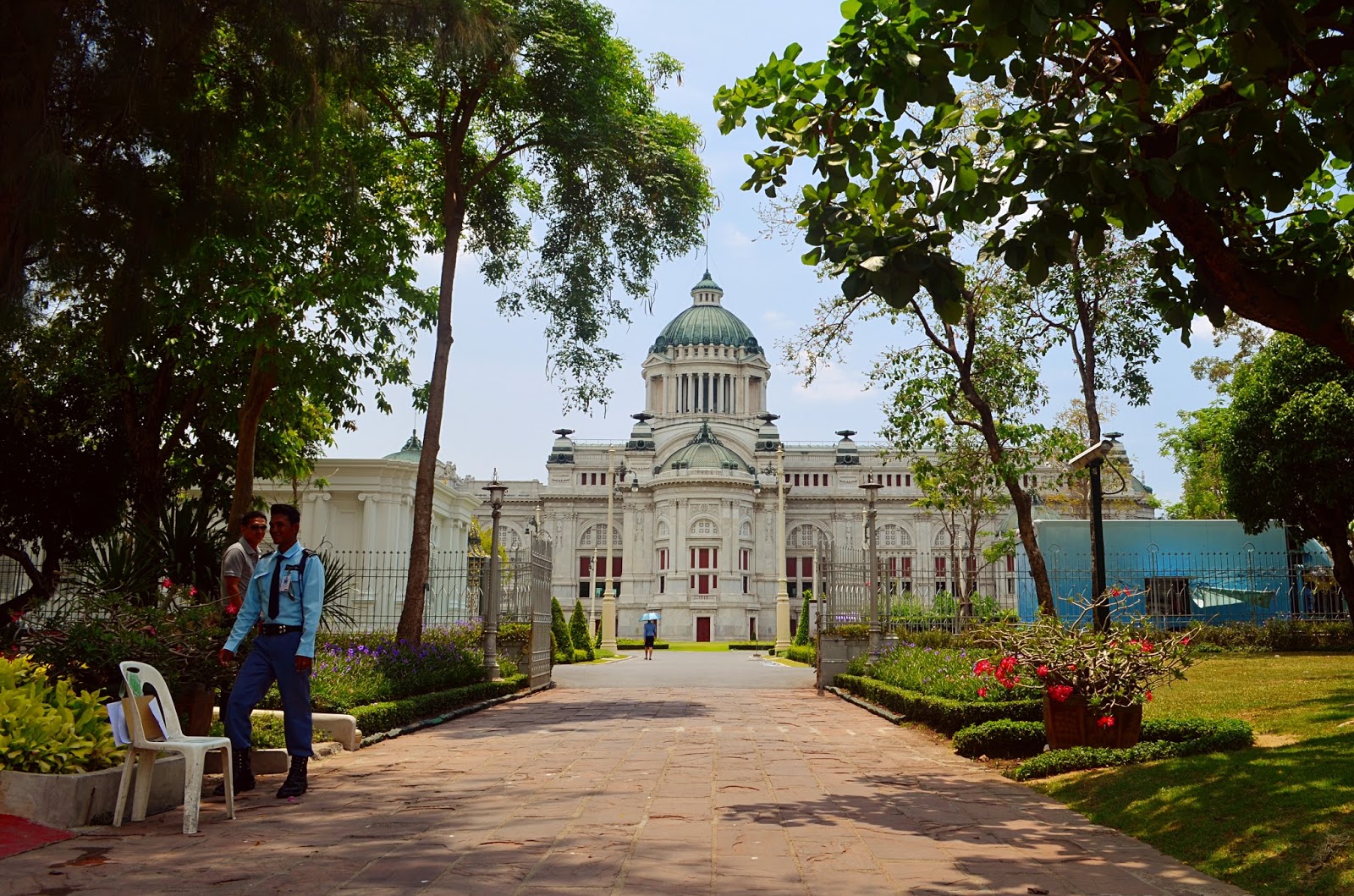Destination: Bangkok (Part 2)
The remainder of my time in Bangkok last year was used to frequent some fairly unique sites to this perplexingly wonderful city. Even in the midst of the military coup and nationwide shutdown with martial law in full effect, it was quite easy to scoot around the city on foot and motorbike. With that in mind, I was off to explore European architecture, Buddhist temples, and the famous floating markets.
Ananta Samakom Throne Hall
The marvelous throne hall was constructed under Rama V in the early 1900s, and today serves as a museum and setting for select ceremonial royal happenings. It sits apart from the glut of Buddhist temples in the northwest corner of the city. Filled with colorful gardens and simple walking paths, the grounds were quite peaceful. An apt area for relaxation for the king and his family.
No pictures allowed inside this beauty of a building, but they would not do it justice. The opulence and grandeur was absolutely breathtaking - gold, ceramic, and the shiny translucence of beetle wings adorned artworks of all kinds, from boat replicas to enormous wood carvings of famous Buddhist folklore scenes.
Vimanmek Mansion
Like the Ananta Samakom Throne Hall, no pictures were allowed inside the mansion. This former royal palace was also inspired by European styles, and was commissioned by the aforementioned Rama V. It was reminiscent of a old southern-style American home, filled with wooden hallways and spacious sunrooms. The historical value of this home must be enormous, as all of the furniture, silverware, and even telephone lines remain from its earliest usage. Many international notables have visited the place, and are honored with portraits throughout the home.
The mansion was located on the same grounds as the Ananta Samakom Throne Hall, and I believe my ticket granted me admission to both areas.
Wat Ratchanaddaram
Wat Ratchanaddara, constructed in the mid-1800s under Rama III as a gift for his granddaughter, is yet another Buddhist temple in the Thai capital. Its crowning jewel is the Loha Prasat, with its 37 spires symbolizing the 37 virtues in Buddhist tradition. The gold spire visible in my photos is the top of this structure. I was told that future plans envision all of the spires to be finished with the same gold treatment.
However, it was around this point that I began to become "templed-out." The grandness of Bangkok is magnificent, but after seeing many temples each day, one subconsciously wearies of climbing the staircases of yet another wat. This, combined with multitudes of tuk-tuk drivers attempting to scam any and all visitors, led me to seek out a stress-free massage for an hour of relaxation later that night.
Other highlights
The Golden Mount
Where the walk up was lovely, and the skies turned apocalyptic.
Floating market
Which I forgot the name. But it was located west of the city?
I stayed at the Niras Bankoc Hostel, shown below. It was located in the heart of the historical district, but far enough away from the infamously rowdy Khao San Road to still have its own distinct vibe. It was within walking distance of almost everything that I wanted to visit (the only exception being the floating markets, located far out in the west). And across the street was a bustling eatery, "Thipsamai," which claimed to have the best pad thai in the world. Was it? Perhaps. But it was by far the best pad thai that I've ever come across.
Bangkok is an amazing place. Tons of history, tons of vibrant life, and tons of adventure. It has done well to earn the title of "Backpacker Capital of the World."
Link to Part 1 here.













Comments
Post a Comment